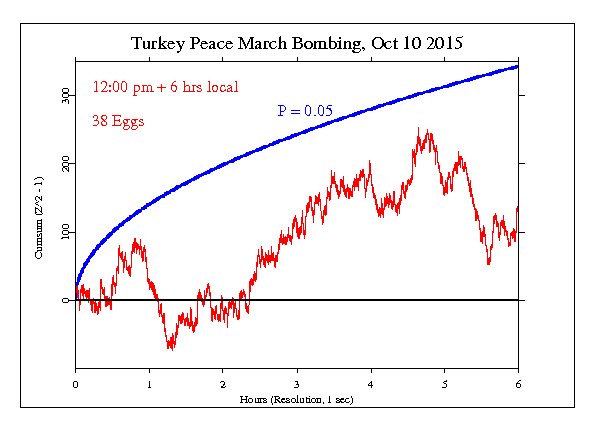Turkey Peace March Bombing
(CNN)Two powerful bombs exploded at a peace rally near the main train station in Ankara on Saturday morning, October 10, 2015, killing at least 95 people and wounding 246 others in the deadliest attack in the Turkish capital in recent memory.
The number of casualties announced late Saturday by the prime minster's officer was lower than the figures given earlier by the Turkish Medical Association. That agency said 97 people had died and more than 400 were wounded. The prime minster's office said 48 victims were in intensive care.
The explosions happened during a peace march involving, among others, the pro-Kurdish HDP, or People's Democratic Party. ISIS is the focus of the Turkey bombing investigation, the Prime Minister says.
Most of the victims were attending a lunchtime demonstration calling for an end to the renewed conflict between the Kurdistan Workers' Party (PKK) and the Turkish government.
Specific Hypothesis and Results
The GCP event was set for 6 hours beginning at noon local time (09:00-15:00 UTC). The result was Chisquare 21731.326 on 21600 df, for p = 0.263 and Z = 0.634.
Interpretation
The following graph is a visual display of the statistical result. It shows the second-by-second accumulation of small deviations of the data from what’s expected. Our prediction is that deviations will tend to be positive, and if this is so, the jagged line will tend to go upward. If the endpoint is positive, this is evidence for the general hypothesis and adds to the bottom line. If the endpoint is outside the smooth curve showing 0.05 probability, the deviation is nominally significant. If the trend of the cumulative deviation is downward, this is evidence against the hypothesis, and is subtracted from the bottom line. For more detail on how to interpret the results, see The Science and related pages, as well as the standard caveat below.

Standard caveat
It is important to keep in mind that we have only a tiny statistical effect, so that it is always hard to distinguish signal from noise. This means that every success
might be largely driven by chance, and every null
might include a real signal overwhelmed by noise. In the long run, a real effect can be identified only by patiently accumulating replications of similar analyses.
